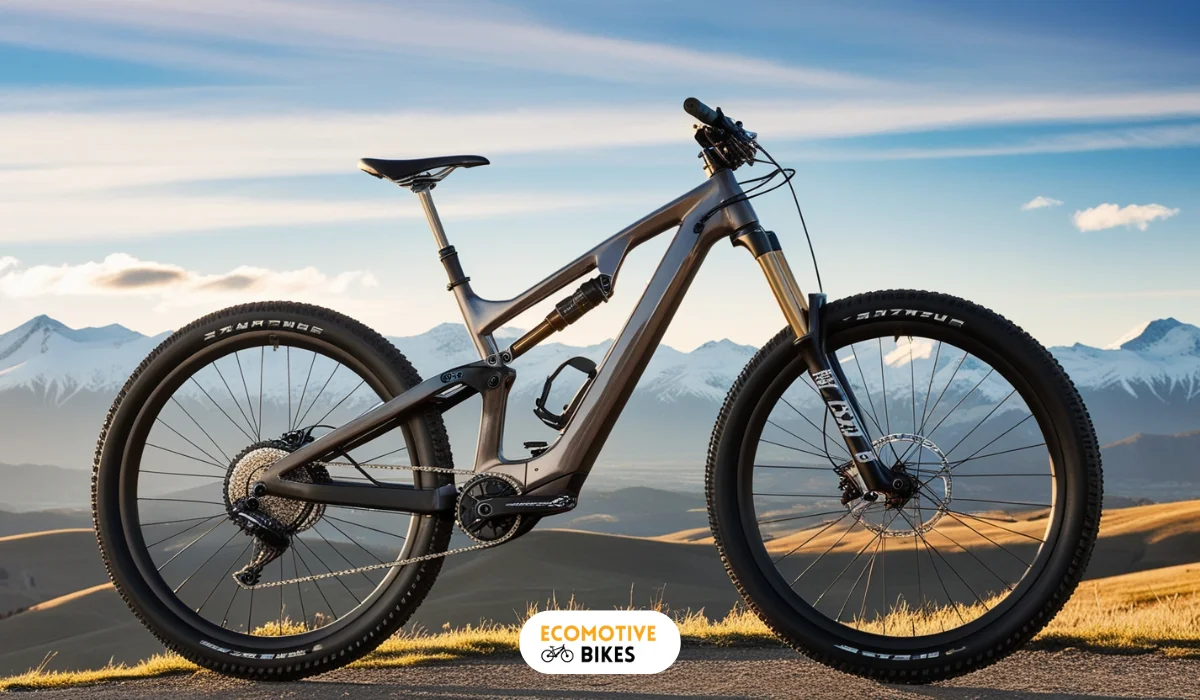Do E-Bikes Require Special Tires? A Comprehensive Guide
Do e-bikes require special tires? Discover how e-bike-specific tires differ from regular ones and offer improved performance, durability, and safety across different terrains.
Table of Contents
Related Articles:
As you prepare to hit the roads on your electric bike, you’re probably wondering if those regular bike tires will cut it. The answer is, not quite. Your e-bike’s performance and safety rely heavily on its tires, and using the wrong ones can lead to a less-than-ideal riding experience.
Do e-bikes require special tires? In this article, we’ll look into the world of e-bike tires, exploring the differences between regular bike tires and e-bike-specific ones, and what you need to know to make the most out of your rides.

Related: Can I use different tires on e-bike?
Are electric bike tires the same as regular bike tires?
A crucial question to ask yourself when considering an electric bike is whether you can use regular bike tires on your e-bike. While it’s technically possible to fit regular tires on your electric bike, we wouldn’t recommend doing so.
Key differences between electric bike tires and regular bike tires
Any seasoned cyclist knows that electric bikes have unique characteristics that set them apart from their traditional counterparts. Electric bikes are heavier, faster, and more powerful, which means they require specialized tires that can handle these demands.
Importance of electric bike-specific tires
Any e-bike enthusiast will tell you that using electric bike-specific tires is crucial for a safe and enjoyable ride. These tires are designed to withstand the added weight and speed of an electric bike, providing better traction, puncture resistance, and overall performance.
Differences in tire compounds, tread patterns, and construction materials all play a critical role in ensuring your electric bike handles smoothly and efficiently. For instance, harder tire compounds help to counteract the extra weight and speed of an e-bike, while puncture-resistant materials reduce the risk of flats and other issues. By choosing electric bike-specific tires, you’ll enjoy a more comfortable, reliable, and enjoyable ride.

Electric bike tire sizes
Even though electric bikes come in various shapes and sizes, their tire sizes play a crucial role in determining their overall performance and handling.
Overview of different wheel sizes (12-inch to 29-inch)
To give you a better understanding of electric bike tire sizes, let’s take a look at the various wheel sizes available, ranging from 12-inch to 29-inch diameters.
16-inch wheels
For compactness and portability, 16-inch wheels are often used on folding electric bikes.
Bike manufacturers use 16-inch wheels to reduce the overall weight and size of the bike, making it easier to store and transport. These smaller wheels also contribute to the bike’s agility and ease of handling.
20-inch wheels
Twenty-inch wheels offer a slightly smoother ride quality compared to 16-inch wheels while still maintaining a compact design.
Inch-for-inch, 20-inch wheels provide a balance between comfort and agility, making them a popular choice for many electric bike models.
26-inch wheels
Tire sizes like 26-inch wheels are commonly found on older-style electric mountain and road bikes.
The larger diameter of 26-inch wheels provides a more comfortable ride quality and better handling on various terrain types. However, they may not be as compact or lightweight as smaller wheel sizes.
The effects of wheel diameter
Keep in mind that the wheel diameter of your electric bike plays a significant role in its overall performance and handling.

Advantages of larger wheels
An electric bike with larger wheels will provide a smoother ride quality, as the larger diameter allows the tires to roll over bumps and obstacles more easily. This also means you’ll have better control over your bike, especially on rough surfaces.
Disadvantages of larger wheels
Disadvantages of larger wheels include a more challenging turning and maneuverability in tight spaces, due to the longer wheelbase. Additionally, larger wheels require more effort to accelerate quickly.
Larger wheels also mean a longer wheelbase, which can affect the bike’s agility and responsiveness. This may not be ideal for riders who need to navigate through heavy traffic or tight corners frequently.
Advantages of smaller wheels
The disadvantages of smaller wheels are often advantages in disguise. For instance, smaller wheels make your electric bike more agile and fun to ride, ideal for weaving through traffic and avoiding obstacles.
Effects of smaller wheels
Effects of smaller wheels include less smooth ride quality, as they don’t roll over bumps and potholes as easily as larger wheels. They also require more energy to maintain speed, making them less efficient on long rides.
Disadvantages of smaller wheels
Smaller wheels have a shorter wheelbase, which can make the bike more prone to tipping or losing control, especially at high speeds. Additionally, they may not provide the same level of comfort and stability as larger wheels.
Smaller wheels require more frequent pedaling and use more battery power to maintain a constant speed, which can reduce the overall range of your electric bike.
Electric bike tire widths
To ensure a comfortable and safe ride, it’s imperative to consider the width of your electric bike tires. The width of your tires will significantly impact how your bike performs on various surfaces.
Fat tires
Bike enthusiasts who venture off the beaten path will appreciate fat tires, which typically measure 4 or 5 inches wide and run at lower pressures than narrower tires. These characteristics make fat tires ideal for riding on different types of terrain, including off-road, gravel tracks, snow, sand, and soft mud. The extra width provides a larger contact patch with the ground, increasing traction and making your ride more stable.
Narrow tires
Bike riders who stick to smooth surfaces will benefit from narrow tires, which are much lighter than fat tires. This reduced weight makes your electric bike more efficient and easier to handle. Narrow tires are perfect for riders who prioritize speed and agility, as they offer low rolling resistance and high pressure.
With narrow tires, you’ll notice improved responsiveness and a more agile ride. However, keep in mind that thinner tires have less grip, making them more vulnerable to punctures and less suitable for wet or loose surfaces. Be cautious when riding on slippery roads or uneven terrain with narrow tires.

The difference between spoked wheels and integrated wheels
Not all electric bike wheels are created equal. Two types of wheels are commonly used: traditional spoked wheels and integrated wheels. Each has its advantages and disadvantages, which can significantly impact your riding experience.
Advantages of integrated wheels
To start, integrated wheels are lightweight and strong, providing minor aerodynamic advantages. Their extra strength allows them to handle high speeds and large amounts of torque produced by the electric motor, giving you predictable handling, especially when cornering at high speeds.
Disadvantages of integrated wheels
Wheels with integrated spokes can be more prone to damage from rough terrain or heavy loads. If damaged, the entire wheel may need to be replaced, which can be costly.
Plus, integrated wheels can be less forgiving on rough roads, transmitting more shock to the rider. This can lead to a less comfortable ride, especially for those who value comfort above all else.
Advantages of spoked wheels
On the other hand, spoked wheels are more flexible and can absorb shock better, making them ideal for off-road riding or rough terrain. They are also more affordable to repair or replace if damaged.
Understanding the benefits of spoked wheels, many riders opt for them when prioritizing comfort and versatility over speed and aerodynamics.
Disadvantages of spoked wheels
On the downside, spoked wheels can be heavier and less aerodynamic than integrated wheels, which can affect your bike’s overall performance.
Differences in weight and aerodynamics can result in a slower ride, making spoked wheels less suitable for riders who prioritize speed and efficiency.
Recall, that the type of wheel you choose ultimately depends on your riding style, terrain, and priorities.

Choosing the right electric bike tires
For optimal performance and safety, it’s crucial to choose the right electric bike tires for your riding style and terrain. With so many options available, it can be overwhelming, but by considering a few key factors, you can make an informed decision.
Considerations for off-road riding
Riding off-road requires tires that can handle rough terrain, mud, and other obstacles. Look for tires with a wider width (around 4-5 inches) and a softer compound to provide better traction and control.
Considerations for efficiency on long rides
Rides that cover long distances require tires that can maintain speed with minimal effort. Opt for tires with a larger diameter (around 26-29 inches) and a narrower width (around 1-2 inches) to reduce rolling resistance and increase efficiency.
Another important factor to consider is the tire’s pressure. Running at the optimal pressure can significantly improve your bike’s efficiency and range. Make sure to check the recommended pressure for your tires and adjust accordingly.
Considerations for agile handling and faster acceleration
Long commutes or urban riding often require quick acceleration and agile handling. Smaller diameter wheels (around 16-20 inches) with narrower tires (around 1-2 inches) can provide faster acceleration and more responsive handling.
Considerations such as tire compound, tread pattern, and wheel material also play a significant role in determining your bike’s agility and acceleration. Look for tires with a softer compound and a more aggressive tread pattern to improve traction and responsiveness. We have a detailed guide on how to select the right tire for an e-bike.
Keep in mind, the right tires can make a significant difference in your riding experience. Be sure to choose tires that align with your riding style and terrain to ensure a safe and enjoyable ride.
Conclusion: Do e-bikes require special tires?
You now have a thorough understanding of how crucial it is to choose the right tires for your electric bike. From the advantages of durable compounds and puncture-resistant designs to the impact of tire width and wheel diameter, you’re well-prepared to make informed decisions.
The right tires can significantly improve your e-bike’s performance, handling, and overall ride quality, ensuring both safety and comfort. Remember, selecting the right tires can truly transform your e-bike experience—so make your choice wisely! Check more relevant articles on e-bikes under accessories.
Faq’s: Do e-bikes need special tires
Do e-bikes require special tires?
Yes, e-bikes require special tires that are designed to handle the extra weight and speed of an electric bike. Regular bike tires may not be effective on an e-bike as they may wear out quickly and may not provide the necessary puncture resistance. E-bike tires have harder compounds that can cope with the extra weight and higher speeds, making them last longer and providing a safer ride.
What is the effect of wheel diameter on e-bike performance?
The wheel diameter of an e-bike significantly affects its performance. Larger wheels provide a smoother ride quality, better control, and increased efficiency, making them ideal for riding on rough surfaces. However, they can make the bike more challenging to turn and maneuver in tight spaces. Smaller wheels, on the other hand, provide more agile handling and faster acceleration, and are ideal for riding in tight spaces, but they may not ride as smoothly over bumps and potholes.
What are the differences between fat tires and narrow tires on e-bikes?
Fat tires on e-bikes offer better stability, traction, and comfort on rough or off-road terrains, while narrow tires provide less rolling resistance, better speed, and improved maneuverability on smoother surfaces like roads.





